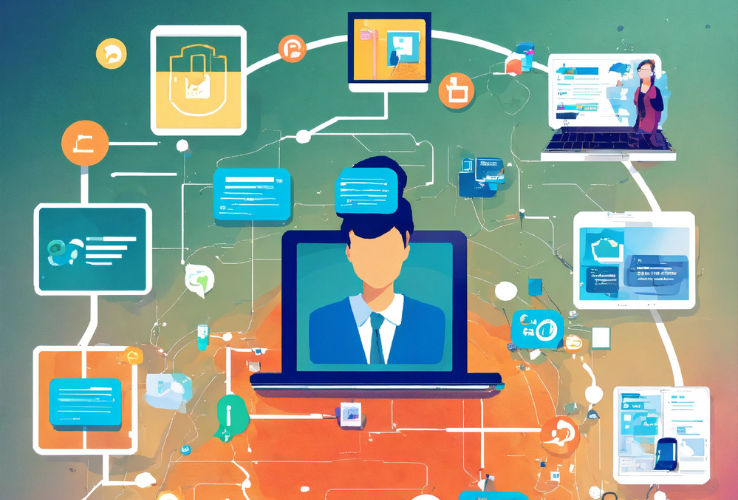E-Government Services: Driving Accessibility Through Technology
In the heart of a bustling city, a young entrepreneur manages her business operations with remarkable ease. From registering her company to filing taxes and accessing government subsidies, every interaction with public services happens seamlessly—without the need for lengthy paperwork or multiple visits to government offices. This isn’t a distant utopia; it’s the reality that e-government services are striving to achieve across the globe. By leveraging technology, governments are transforming the way they interact with citizens, making public services more accessible, efficient, and inclusive.
The rise of e-government platforms is not just a technological innovation; it’s a profound shift in how governments fulfill their responsibilities. These platforms embody a vision of governance that is transparent, citizen-centric, and adaptive to the demands of a digital age. The journey, however, is complex and requires thoughtful integration of technology, infrastructure, and human resources.

A Paradigm Shift in Public Service Delivery
For decades, accessing government services meant navigating bureaucratic hurdles—long queues, endless forms, and frequent delays. This inefficiency not only frustrated citizens but also limited the reach and effectiveness of government programs. The advent of e-government has changed this narrative, replacing cumbersome processes with digital solutions that prioritize accessibility and efficiency.
At its core, e-government leverages technology to provide a single, integrated interface through which citizens can access a wide range of public services. Whether renewing a driver’s license, applying for social benefits, or accessing healthcare information, these platforms aim to deliver services at the click of a button.
Countries leading this transformation are proving that e-government is more than just convenience—it’s a means to strengthen trust, reduce corruption, and enhance inclusivity. Estonia, for example, is a pioneer in e-governance, offering services like e-residency, online voting, and digital tax filing, all within an integrated digital ecosystem. Citizens and businesses alike benefit from the country’s commitment to reducing bureaucratic overhead and enhancing transparency.
Key Components of E-Government Platforms
The success of any e-government initiative lies in its design and implementation. A well-executed e-government platform typically comprises:
Unified Portals
Centralized websites or mobile apps serve as gateways to multiple government services. These platforms eliminate the need for citizens to interact with disparate agencies, offering instead a unified experience.Data Integration
E-government platforms rely on interconnected databases that allow different departments to share and access information. This integration reduces redundancy and ensures that citizens only need to provide their data once.Digital Identity Systems
Secure digital identity solutions, such as Estonia’s e-ID or India’s Aadhaar, form the backbone of e-government services. These systems authenticate users and enable secure transactions, fostering trust and accountability.Cloud Infrastructure
Cloud computing ensures that e-government platforms are scalable, resilient, and capable of handling large volumes of traffic. It also reduces costs by enabling resource sharing across agencies.
Success Stories: E-Government in Action
Estonia: A Global Leader in E-Governance
Estonia’s e-government platform stands as a benchmark for other nations. Citizens can access 99% of government services online, from filing taxes to voting. Its digital-first approach has saved the country an estimated 2% of GDP annually by reducing administrative costs.
The X-Road platform, a cornerstone of Estonia’s e-governance, enables secure data exchange between public and private sector organizations, ensuring seamless service delivery while safeguarding data privacy.
India’s Digital India Initiative
India’s Digital India initiative aims to empower citizens through digital inclusion. The platform integrates services like Aadhaar, a biometric-based identity system, and DigiLocker, a cloud-based repository for official documents. These innovations have simplified access to government services for millions, especially in rural areas where traditional infrastructure is limited.
Rwanda’s Irembo Platform
In Africa, Rwanda has emerged as a leader in e-government with its Irembo platform. Citizens can access over 100 services online, including birth registration and land title applications. By eliminating bureaucratic inefficiencies, Irembo has significantly reduced the time and cost associated with public services.

Challenges on the Path to Digital Governance
While the benefits of e-government are clear, implementing these platforms comes with its own set of challenges:
Digital Divide
Limited internet access and low digital literacy can exclude marginalized populations from benefiting fully. Governments must address these barriers through investments in infrastructure and education.Cybersecurity Risks
The reliance on digital systems makes e-government platforms vulnerable to cyberattacks. Ensuring robust data protection and system security is critical to maintaining public trust.Interoperability Issues
Integrating data and services across diverse government agencies requires significant coordination and technical expertise. Misaligned systems can hinder the seamless delivery of services.Resistance to Change
Cultural and organizational resistance within public institutions can slow the adoption of e-government initiatives. Leadership and change management are essential to overcoming these hurdles.
The Road Ahead: Emerging Trends in E-Government
The evolution of e-government is far from over. Emerging technologies and innovative approaches are set to redefine what’s possible:
AI-Driven Personalization
Artificial intelligence can enhance e-government platforms by offering personalized recommendations and automating routine queries. Chatbots, for instance, are already being used to handle citizen inquiries in real-time.Blockchain for Transparency
Blockchain technology has the potential to enhance trust by creating immutable records of transactions, such as land registrations or social benefit disbursements.Mobile-First Approaches
With mobile penetration outpacing desktop usage in many regions, designing e-government platforms with a mobile-first approach ensures broader accessibility.Cross-Border E-Government
As globalization increases, countries may collaborate on cross-border e-government initiatives, allowing citizens to access services seamlessly while traveling or residing abroad.
